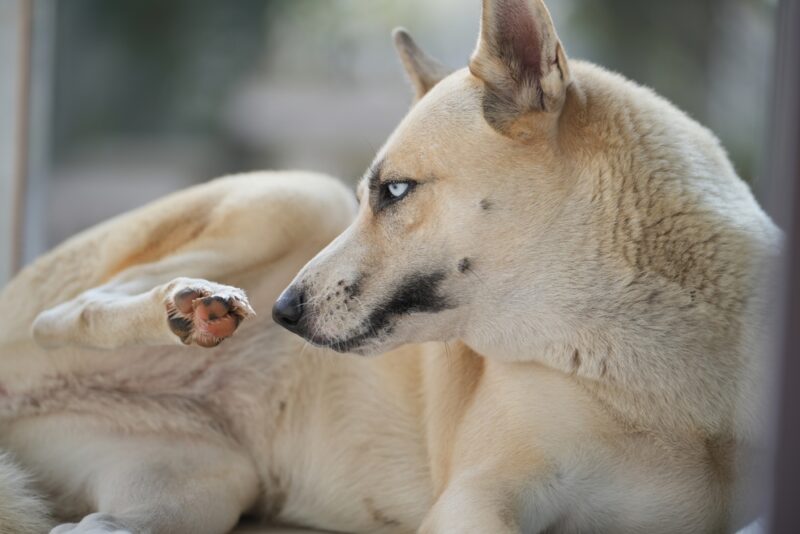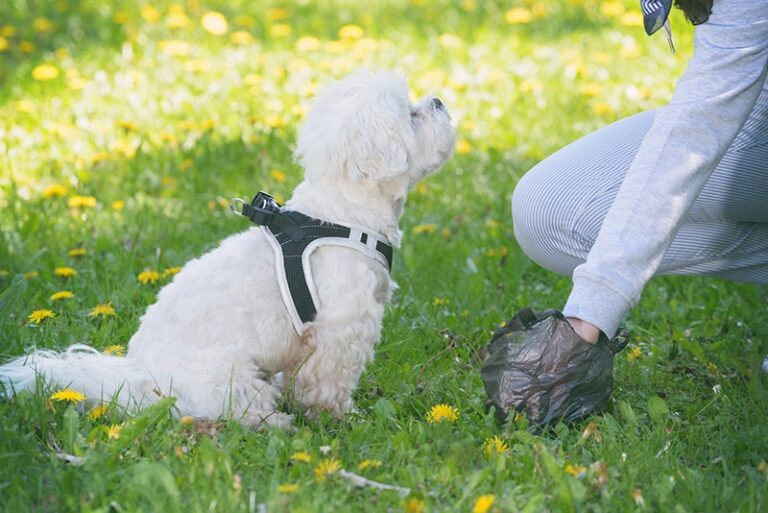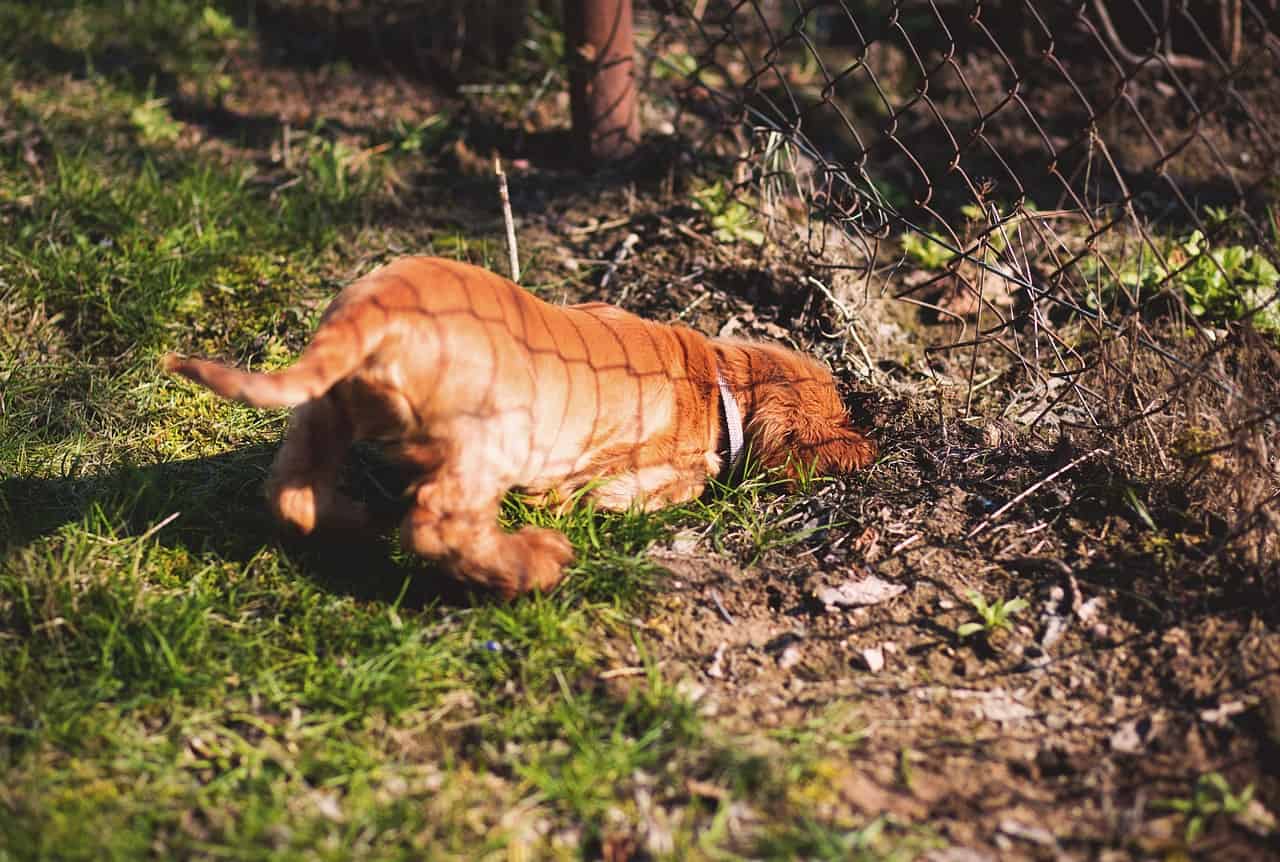VET APPROVED

The information is current and up-to-date in accordance with the latest veterinarian research.
Learn more »Dogs are full of personality and have their own habits and behaviors. You may find them biting their own feet and paws and wonder why they are doing so. Dogs lick and chew on their paws and limbs as part of their normal grooming routine. But when do we consider this behavior cause for alarm?
In this article, we’ll explore seven reasons why your dog chews on their feet, signs to watch out for, and what we can do to help!

The 7 Reasons Why Your Dog Chews and Bites His Feet
1. Occasional Grooming
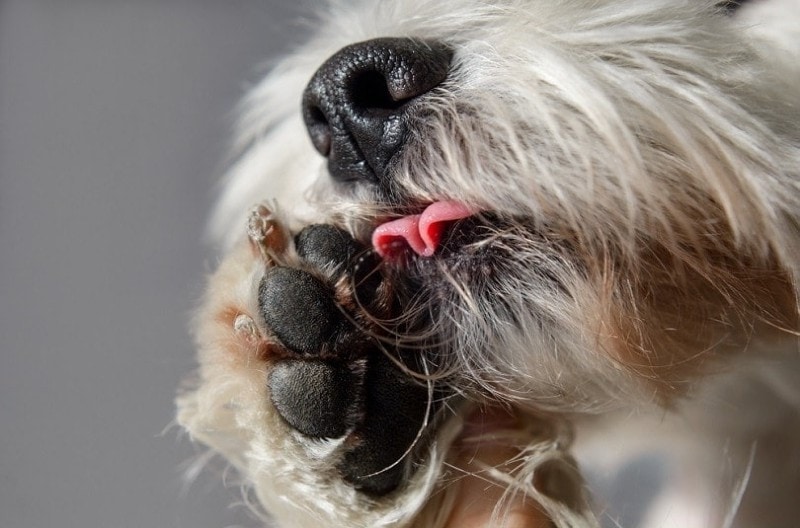
Occasionally, you may find your dog licking their fur. This is a normal grooming behavior and is not limited to their paws and feet. You may also find them licking other parts of their body, including their genitalia. Sometimes they are just relieving themselves from a simple itch!
Dogs may develop a habit of chewing and licking their limbs, but only in moderation. If you notice any visual signs or excessive chewing on a particular area, it is often a sign of a skin condition that needs veterinary attention.
2. Allergies
Allergic reactions are caused by an immune response to allergens in food or in the environment. This may cause redness, swelling, and itchiness on the skin, which is why you might find your dog chewing on that area. You may also notice redness and swelling around the eyes and nose when your dog is experiencing allergies. Some ingredients in food, as well as environmental factors like pollen, mold, or even dust in your furniture, can cause allergies.
Changes in weather can also cause dryness, making it very uncomfortable and itchy for your dog. As dog owners, it’s important to identify the types of foods that work and what your dog may be allergic to. It is also recommended to keep your dog’s environment clean to prevent any environmental allergens from causing discomfort. Persistent allergic reactions can cause dermatitis and may require a trip to the vet.
3. Dermatitis
Dermatitis is caused by skin irritation due to allergens or bacterial problems. They can also occur when your dog’s skin encounters chemicals in the grass or in the yard. Dermatitis can also develop due to poor hygiene, which is why it is recommended that you keep your dog’s paws and limbs clean.
If dermatitis persists, your veterinarian may prescribe topical medication such as creams, ointments, and special shampoos. Oral medication may also be prescribed for more severe signs of dermatitis.
4. Bacterial or Fungal Infection
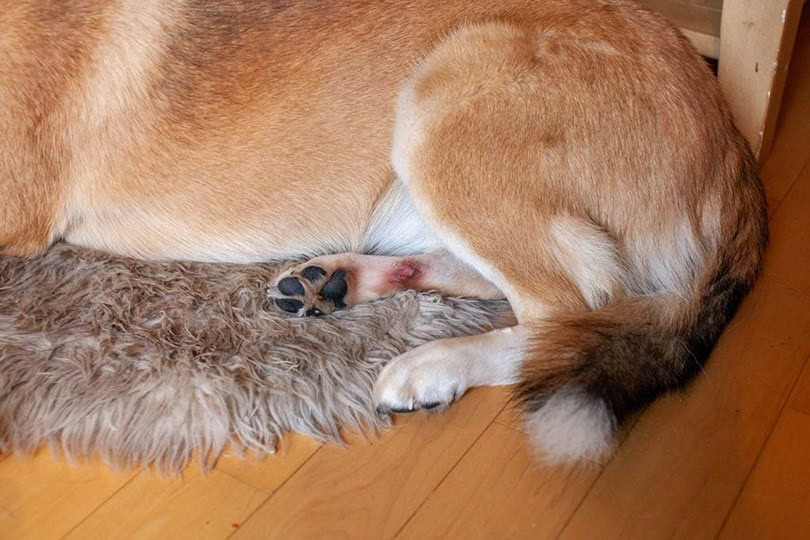
Numerous bacterial and fungal infections can develop on your dog’s itchy lesions if left untreated. The moisture caused by constant licking can provide an environment for bacterial and yeast infections to develop. Infections can be identified by aggressive itching, swelling, redness, and maybe even discharge on the lesions for more severe cases.
Immediate veterinary management is recommended to stop the infections from getting worse. Once the causative agent of the infection has been identified through examination, your veterinarian will most likely prescribe topical or oral antibiotics for bacterial infections, and antifungals for fungal infections such as yeast and ringworm.
The sooner you consult your veterinarian, the better and quicker the healing process will be. Early intervention will also prevent the condition or infection from getting worse.
5. Parasites
Dogs are energetic and love to explore. If they run around in the woods or the city, parasites can be one of the biggest concerns for dog owners. These tiny pests, such as ticks, fleas, and mites, may irritate your dog, and their solution may be to chew on them.
Some ticks are big enough for dogs to remove with their teeth, but they are still at risk for Lyme disease. Fleas can cause massive itchiness and irritation but often go unnoticed unless there are several. Mites can be equally irritating but are microscopic and burrow inside your dog’s skin, so they won’t simply go away through chewing.
If you find your dog gnawing on their feet with visible signs of irritation, a parasite may be causing the discomfort. It is best to consult a veterinarian for proper assessment and recommend treatment to eliminate these parasites.
6. Injury and Pain
Your dog may be chewing at their feet due to injury or pain. Injuries such as cuts, punctures, torn nails, burns, or foreign objects stuck in between their paw pads can cause your dog to chew on them. If you suspect this type of injury, inspect your dog’s feet for any foreign objects, swelling, or bleeding. Although injuries of this nature can easily be remedied through basic first aid, it is important to keep the area clean to prevent any further infection and irritation.
Other causes of leg chewing can include musculoskeletal injuries. Try to see if your dog is limping while walking or if they have difficulty bearing weight on the limb. If you find your dog experiencing these types of injuries, remember to keep the area clean and prevent any behaviors that can worsen the injury, such as excessive licking and chewing or excessive activity if the muscle or bone is injured.
7. Behavior
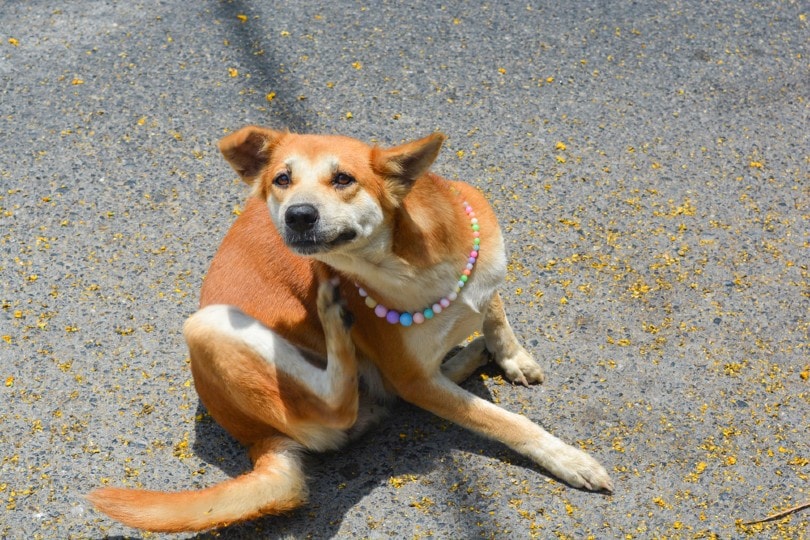
Issues in behavior and emotion can also cause excessive licking and chewing of your dog’s paws. Your dog can experience boredom, anxiety, and stress. Like people, dogs look for ways to stimulate themselves if they get bored. Dogs can chew on their feet if they find themselves lacking mental or physical engagement.
To alleviate boredom, a few ways to engage your dog include taking them out for walks, playing with them, or simply providing them with toys. Some dogs can get easily overwhelmed, which makes them feel uneasy. Loud noises, separation from their owners, and changes in routine and environment can cause anxiety in dogs, and they chew as an attempt to soothe themselves.

Signs to Watch Out For
As dog parents, it is crucial to distinguish between normal and abnormal behavior. The first thing you can do is to visually inspect your dog’s toes, paws, and limbs, as well as the manner your dog is chewing.
- Redness
- Swelling
- Bleeding
- Burns
- Cuts and wounds
- Loss of hair
- Foreign bodies such as glass or splinters
- Parasites such as ticks or fleas
- Odors
- Aggressive and irritable chewing on the area
We must be vigilant in looking out for signs of pain and discomfort. If you suspect anything, contact your veterinarian.
What Can You Do?
Identifying what is expected and abnormal in your dog is a very important responsibility for dog owners. If you find your dog exhibiting unusual behavior, it may be a sign that they are experiencing something uncomfortable.
Look out for the signs and seek immediate veterinary help to identify the cause of their chewing. Like all medical conditions, prevention is always the best form of treatment. Keeping a clean environment, practicing good hygiene, and maintaining a healthy and balanced diet can help prevent a variety of health conditions not limited to the skin.

Conclusion
Dogs have unique habits and behaviors. Knowing your dog is very important, especially when identifying whether they need help or not. The last thing we want is for our dogs to be sick and uncomfortable, so understanding the causes of paw chewing can help us keep our dogs happy and healthy!
Featured Image Credit: KPhrom, Shutterstock
